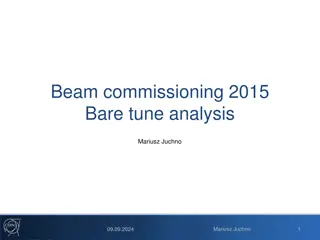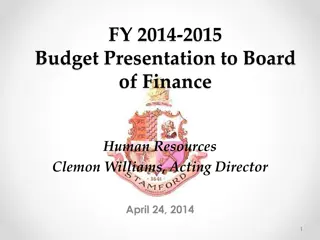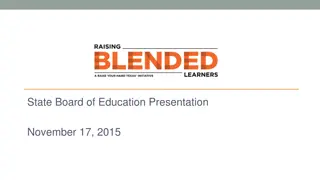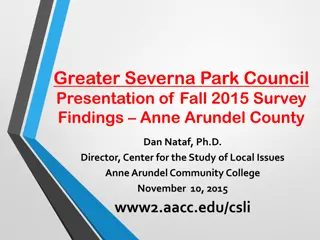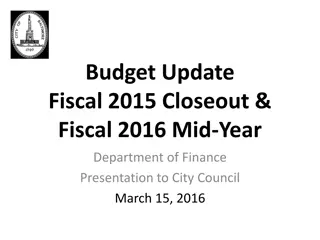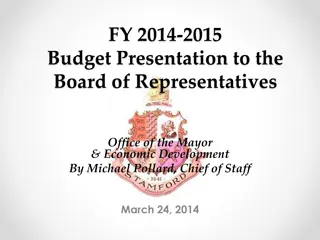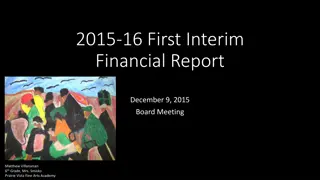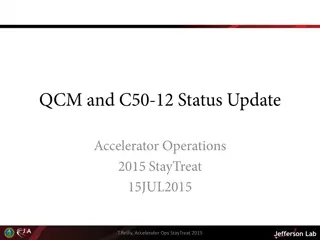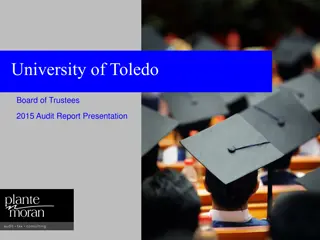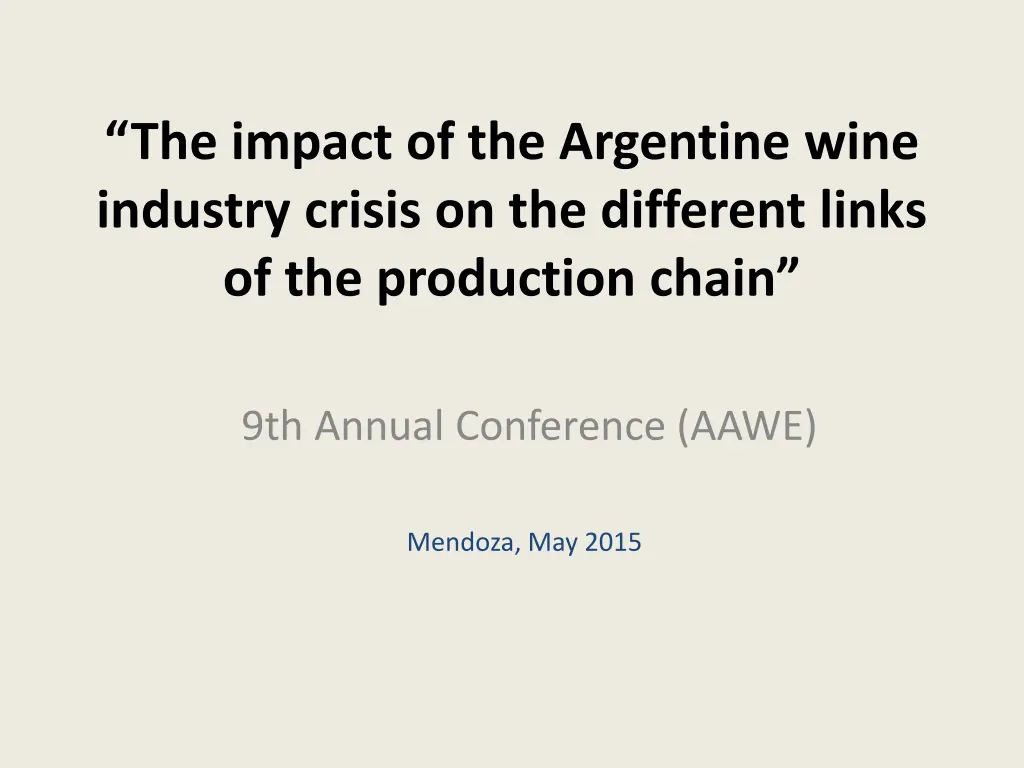
Impact of Argentine Wine Industry Crisis on Production Chain Links
Explore the impact of the Argentine wine industry crisis on various stages of the production chain through a series of visuals depicting the evolution of grape supply and demand, fluctuations in wine prices, costs, and operational profits in Mendoza. Understand the challenges faced by grape growers and wineries due to the cyclical nature of crises affecting profitability.
Download Presentation

Please find below an Image/Link to download the presentation.
The content on the website is provided AS IS for your information and personal use only. It may not be sold, licensed, or shared on other websites without obtaining consent from the author. If you encounter any issues during the download, it is possible that the publisher has removed the file from their server.
You are allowed to download the files provided on this website for personal or commercial use, subject to the condition that they are used lawfully. All files are the property of their respective owners.
The content on the website is provided AS IS for your information and personal use only. It may not be sold, licensed, or shared on other websites without obtaining consent from the author.
E N D
Presentation Transcript
The impact of the Argentine wine industry crisis on the different links of the production chain 9th Annual Conference (AAWE) Mendoza, May 2015
What do we mean by wine crisis?
Evolution of the supply and demand for grapes, measure in quintal Argentina 1930/2003 Demanda Demand Supply Oferta 2 per. media m vil (Oferta) 2 periods moving average (Supply) 40000000 35000000 30000000 25000000 20000000 qq 15000000 10000000 5000000 0 1930 1933 1936 1939 1942 1945 1948 1951 1954 1957 1960 1963 1966 1969 1972 1975 1978 1981 1984 1987 1990 1993 1996 1999 2002 The most important crisis occurred when the excess of supply lasted a long time. For example, the majority of the 30s and 80s.
Evolution of the actual price of wine in the wholesale market, Mendoza, jan-1993/mar-2015 60 50 40 30 20 10 WINE CRISIS - dic-95 feb-97 dic-02 feb-04 dic-09 feb-11 nov-98 nov-05 nov-12 abr-98 abr-05 abr-12 ene-93 ene-00 ene-07 ene-14 sep-97 sep-04 sep-11 may-95 may-02 may-09 oct-94 oct-01 oct-08 jun-99 jun-06 jun-13 jul-96 jul-03 jul-10 ago-93 mar-94 ago-00 mar-01 ago-07 mar-08 ago-14 mar-15 In the last 20 years, the crisis are shorter. Yet, in the four periods, the price of grapes and wines did not leave any profits to grape growers and wineries.
Costs and sustainability of the grape production
Operational costs Mendoza, 2014/2015 Purposes Varietal Varietal Generic Must Generic W/Net Not Net 500 450 400 350 $/qq 300 250 200 150 100 50 0 10 25 5 10 25 5 10 25 5 10 25 5 10 25 5 10 25 5 10 25 First Zone & Uco Valley North & Est South Hectareas
Operational profit (Margin/Operational costs) Mendoza, 2014/2015 Purposes Varietal Generic Varietal Must Generic W/Net Not Net 20% 10% 0% -10% -20% -30% -40% -50% -60% 10 25 5 10 25 5 10 25 5 10 25 5 10 25 5 10 25 5 10 25 First Zone & Uco Valley North & East South Hectareas
Analysis of the income distribution of the wine industry
Income distribution Grape Growers Wineries Cost of grape Cost of wine Cost of wine bottling Wine Bottling Distibution Cost of distribution and retailing Whole Sale Retail Consumer Market
Main variables in the Argentine wine industry, 2003/14 Vineyards Harvest Yield Wineries Exports Domestic Market (hl) Must or grape juice concentrate (Tn) Year Other products (hl) Surface in ha metric qq qqm/ha wines (hl) Wines (hl) Price (u$s/Tn) Tn 2003 2004 2005 2006 2007 2008 2009 2010 2011 2012 2013 2014 210.530 212.659 218.589 223.034 225.846 226.450 228.575 217.750 218.499 221.202 226.580 23.014.806 26.429.395 28.297.116 28.809.274 30.925.095 28.216.964 21.815.673 26.196.906 28.902.962 22.442.198 28.717.487 26.351.087 109 124 129 129 137 125 95 120 132 101 128 s/d 13.225.276 15.464.289 15.221.555 16.396.350 15.045.915 14.676.415 12.135.467 16.324.884 15.472.635 11.778.029 12.629.263 15.197.450 4.380.006 4.703.102 6.105.536 6.390.436 8.109.696 6.385.274 3.861.089 3.482.432 6.243.322 4.944.229 6.380.794 4.612.084 12.338.416 11.112.578 10.972.454 11.103.938 11.165.998 10.677.191 10.342.267 9.753.081 9.795.667 10.050.928 10.351.751 9.913.213 1.852.260 1.553.391 2.147.759 2.934.248 3.597.702 4.140.548 2.930.491 2.744.311 3.115.417 3.656.429 3.150.515 2.625.613 106.803 10.302 135.523 161.007 197.831 191.728 105.748 91.133 146.135 146.710 126.937 118.097 522 704 734 731 878 1.154 1.249 1.381 1.363 1.638 1.801 1.359 s/d What has happened in the last 10 years? The area has increased 13.000 has (+6%). However, the great production is still the same because the new vineyards were of high enological quality. The wine domestic market is still decreasing (2,4 M of hl of wine less than in 2003). Exports increased significantly until 2012. In the last 2 years, it decreased by about 1 M of hl. Exports of must or grape juice concentrate, have a limit since 2013.
Income distribution in the domestic market 2014/15 (two scenarios)
Actual (pessimistic) Income distribution of the sale of 1 liter of wine in the domestic market , Argentina, 2015 Surplus 41% Link u$s / Lt 59% Grape growers -0,026 Wineries -0,073 Wine bottling 0,684 Distribution and Retail 0,965 Total Value 1,649 Wine bottling Distribution and Retail
Optimistic scenary Income distribution of the sale of 1 liter of wine in the domestic market , Argentina, 2015 61.06% Surplus Link u$s / Lt 37.57% Grape growers 0,015 Wineries 0,006 Wine bottling 0,579 0.39% 0.97% Distribution and Retail 0,941 Total Value 1,541 Grape growers Wineries Wine bottling Distribution and Retail
Must business Income derived from the export of 1 ton of must, Argentina, 2015 Surplus 11.27% Link u$s / Lt Grape growers (without subsides) -0,094 Wineries 19.72% Grape growers (with subsides) -0,014 Concentration Wineries 0,008 Export Concentration 0,014 69.01% Export 0,049 Generated value 0,072
Analysis of the income distribution on the wine industry in the last ten years
Evolution of the income distribution u$s per liter 1.80 1.60 1.40 1.20 0.965 0.863 0.941 1.00 0.722 0.80 0.60 0.41 0.40 0.49 0.607 0.684 0.579 0.20 0.12 0.016 0.024 0.011 0.112 0.106 0.05 0.006 0.00 -0,026 0.015 2005 2010 2013 2015 (p) 2015 (o) -0,013 -0.20 Grape Grower Winery Wine Bottling Distribution & Retail Evidently, grape growers and wineries have lost profitability in the last 10 years.
The concentration in the wine bottling sector
Evolution of the concentration in the wine bottling sector, Argentina, 2005/13 Year 2005 Year 2007 Year 2009 Year 2011 Year 2013 Index 1 Main company Index 3 3 main companies Index 5 5 main companies Index 10 10 main companies 20% 21% 22% 25% 26% 43% 47% 48% 50% 51% 50% 53% 55% 57% 60% 61% 64% 65% 67% 70% Evolution of the concentration in the wine bottling sector of generic wines, Argentina, 2005/13 FECOVITA FECOVITA FECOVITA FECOVITA FECOVITA. 1 GRUPO PE AFLOR Year 2005 GRUPO PE AFLOR Year 2007 GRUPO PE AFLOR Year 2009 GRUPO PE AFLOR Year 2011 GRUPO PE AFLOR Year 2013 2 R.P.B. R.P.B. R.P.B. R.P.B. R.P.B. 3 GARBIN 19% GRUPO CATENA 20% GRUPO CATENA 23% GRUPO CATENA 27% AITOR IDER BALBO 31% 4 Index 1 Main company Index 3 3 main companies Index 5 5 main companies Index 10 10 main companies DEL VALLE GARBIN AITOR IDER BALBO AITOR IDER BALBO GRUPO CATENA 5 GRUPO CATENA 46% ORFILA S.A. 51% GARBIN 53% ORFILA. 55% PERNOD RICARD 59% 6 LA RIOJANA AITOR IDER BALBO PERNOD RICARD PERNOD RICARD ORFILA 7 AITOR IDER BALBO 54% VI AS DE ALTURA 58% LA RIOJANA 58% LA RIOJANA 62% J. LLORENTE 67% 8 LUCCHESI 65% PERNOD RICARD 68% ORFILA 69% MOET HENESSY - LOUIS VUITTON GARBIN 72% LA RIOJANA 77% 9 ORFILA LA RIOJANA VILLA DEL ROSARIO BEBIDAS MOET HENESSY - LOUIS VUITTON 10
Which is the key variable that determine the wine price in the wholesale market?
Relationship between the actual price of wholesale market and the expective stock. 70 60 50 40 30 20 10 - ene-03 ene-08 ene-13 sep-04 sep-09 sep-14 oct-06 oct-11 jun-03 jun-08 jun-13 jul-10 jul-05 feb-05 feb-10 mar-07 mar-12 dic-05 ago-07 dic-10 ago-12 abr-14 abr-04 abr-09 nov-08 nov-13 nov-03 may-06 may-11 8 7 6 5 4 3 2 1 - 01/10/2003 01/07/2004 01/11/2005 01/03/2006 01/02/2009 01/09/2009 01/05/2011 01/11/2011 01/01/2012 01/07/2013 01/12/2013 01/12/2014 01/11/2002 01/11/2004 01/02/2005 01/09/2006 01/05/2007 01/11/2008 01/03/2010 01/11/2010 01/11/2012 01/04/2013 01/04/2014 01/06/2014
Conclusions The wine industry faces a new crisis (the last was in 2001/02). This crisis is causes primarily by macroeconomic variables. Even though, the economic model has not effect upon the domestic market, it does really affect exports. Also, since last year, the international must market had being decreasing by a change of preferences that is affecting exports and prices. It is important to highlight that the crisis impacts in differently ways in each sector. The grape growers are losing money. The wineries are also working in the limits. There are 13% less wineries producing wine than in 2014. It`s the same true story to the must production. The wine bottling sector receives the biggest share of the market. It is worth noticing that the grape growers have lost the biggest share of income. The same is also true to the wineries in the last decade. Today the most important factor that affect the grape growers and wineries income is the expected stock. The wine stock is 2,5 months over the optimum value. All the policies must operate in order to decrease it.
THANKS Carlos E. Abihaggle MA carlosabizam@gmail.com Lic. Alfredo Aciar alfaciar@gmail.com Lic. Leonardo Gonzalez gonzalezluque@hotmail.com Aknowledge: FUNC Asociaci n de Vi ateros de Mendoza







